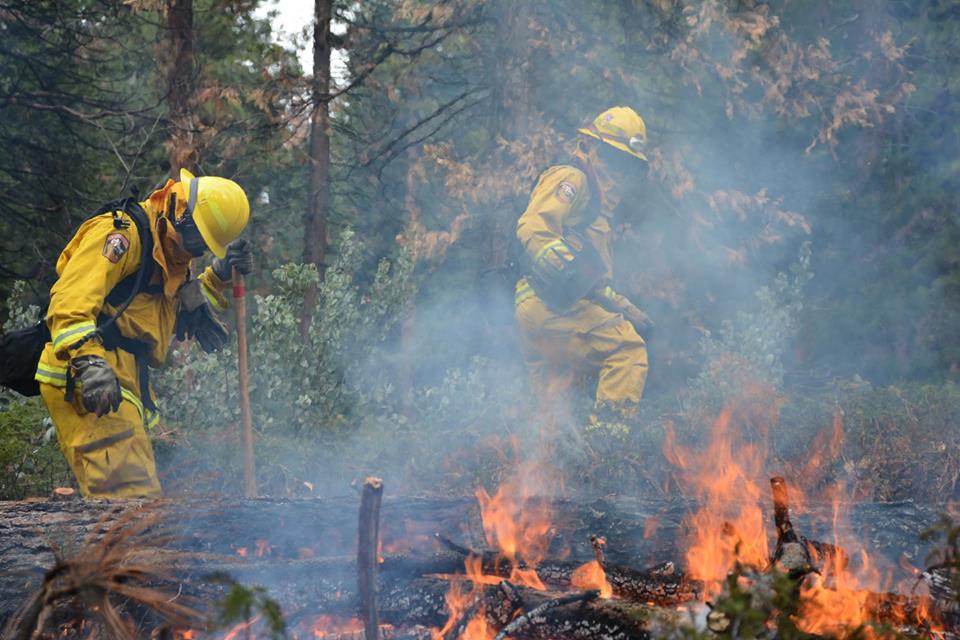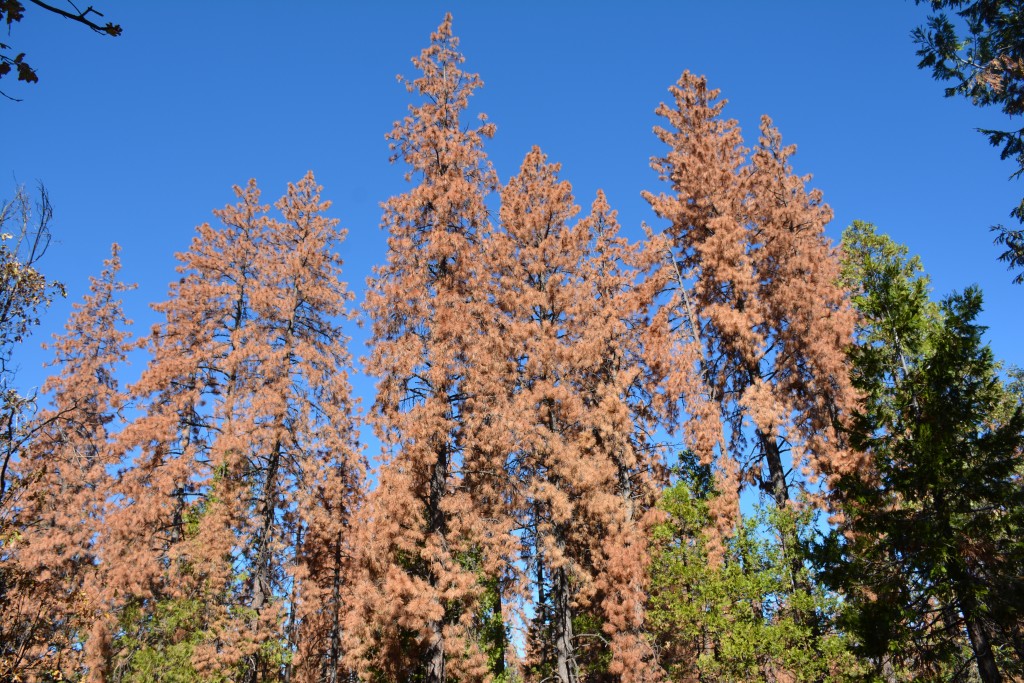The recent storms can’t wash away the memory of the fires that ravaged the drought-stricken hillsides south of San Jose last fall.
Joe Leonard saw the fire as he drove to his home near Morgan Hill from work. “I knew it was a big one,” he recalled, as soon as he saw the tower of smoke rise up over Highway 101. Ash from the fire four miles away fell on his car, and from a hilltop that night in September 2016 he said, it “looked like you were looking at a volcano.”

Fire scientists confirm what fire-country residents like Leonard know to be true: wildfires are getting worse. As Columbia University scientist Park Williams told a group of faculty, students and community members at Stanford in January, the heat from global warming is sucking the moisture out of soil and vegetation, making wildfires burn bigger, hotter and more often in Northern California. Added to drought, a plague of tree-killing bark beetles, and historical fire-fighting policies, it’s a recipe for infernos.
In 2016, 619 more fires occurred in California than in the previous year, CAL FIRE spokesperson Scott McLean said in an interview. And firefighting doesn’t come cheap: California has spent $380.5 million so far in the current fiscal year.
McLean blames the increase in forest fires on the death of over 100 million trees in California forests, killed by drought and an ongoing infestation of bark beetles. Williams has a different explanation: global warming is the key culprit, he said, and tree death and forest fires are symptoms of a hotter, drier climate.
Addressing a standing-room-only lecture hall at Stanford, Williams looked more like a lumberjack — complete with beard and plaid shirt — than a man who uses computers to analyze large datasets for a living. A bioclimatologist, Williams studies how the changing climate impacts U.S. forests.
The Western United States, Williams explained, has about six times more forest fires each year than the mid-1980s. “[T]hat increase can be almost entirely explained by the increase in aridity — the drying out of the environment — that has occurred during that time and most of that drying is due to warming and much of that warming is due to the global process,” Williams said.
Using data from satellites that measure the acres burned by wildfires, William and his team found that since 1970, 57 percent of the observed drying in Western U.S. forests is a direct result of global warming. Drying disrupts ecosystems exacerbating drought and tree death in Western forests. As temperatures warm in the woodlands of Northern California, soil, air and flora lose moisture and create a more fire-friendly environment.

Climate change isn’t the only way humans have contributed to California’s wildfire boom. For a century, government agencies have prioritized putting fires out, even though most California wildlands naturally burn periodically, and need to, to stay healthy. There are now many places that haven’t burned in a generation or more, according to Williams. So there are more wildfires, and blazes are now more intense, due in part to the buildup of fuel from suppressing fires. “It’s partly the increase in fuels that has allowed fire to respond so strongly to climate,” Williams said.
This “fire deficit” points to an ironic solution to NorCal’s fire problem: more fires. “Fires regulate fuels and that in turn regulates fires,” Williams said.
Working together, fire suppression and climate change have enlarged the areas burned by wildfires. But by changing our fire policies to let some fires burn now, Williams said, and starting other controlled burns, we fire managers can start taking fuel out of the system, according to Park. CAL FIRE implements fuel management programs like controlled burns. So future fires are smaller and less damaging to the forests they leave behind.
Fire will always be a part of California life, especially with climate change. But smarter management can help keep the really big fires Leonard remembers from last fall safely in the realm of memory.
